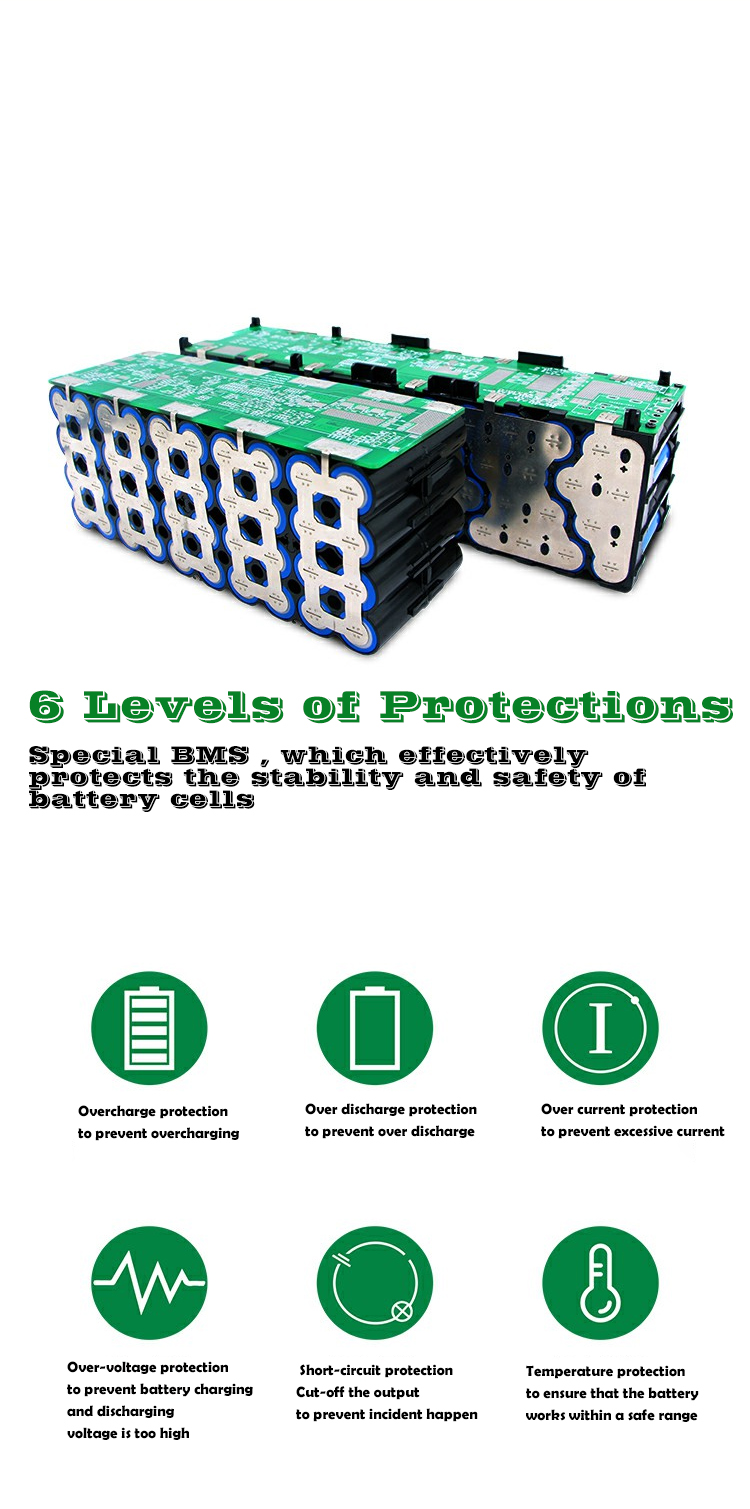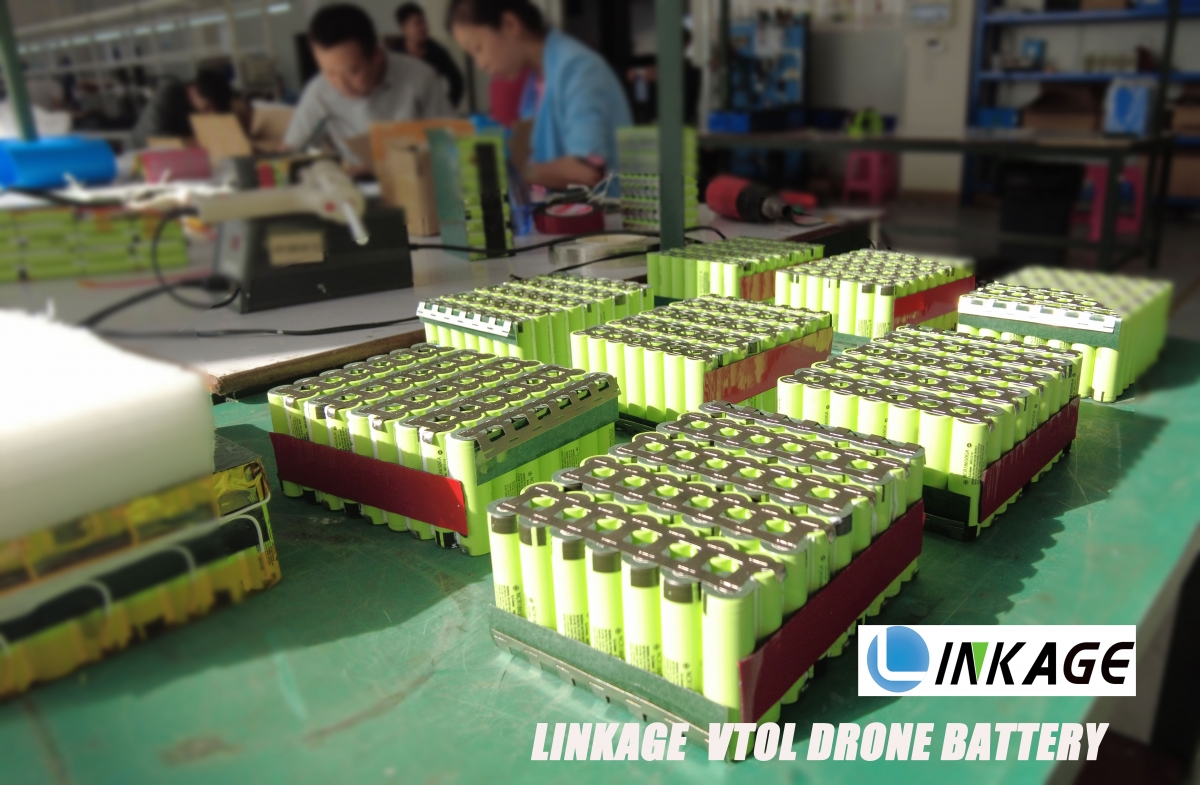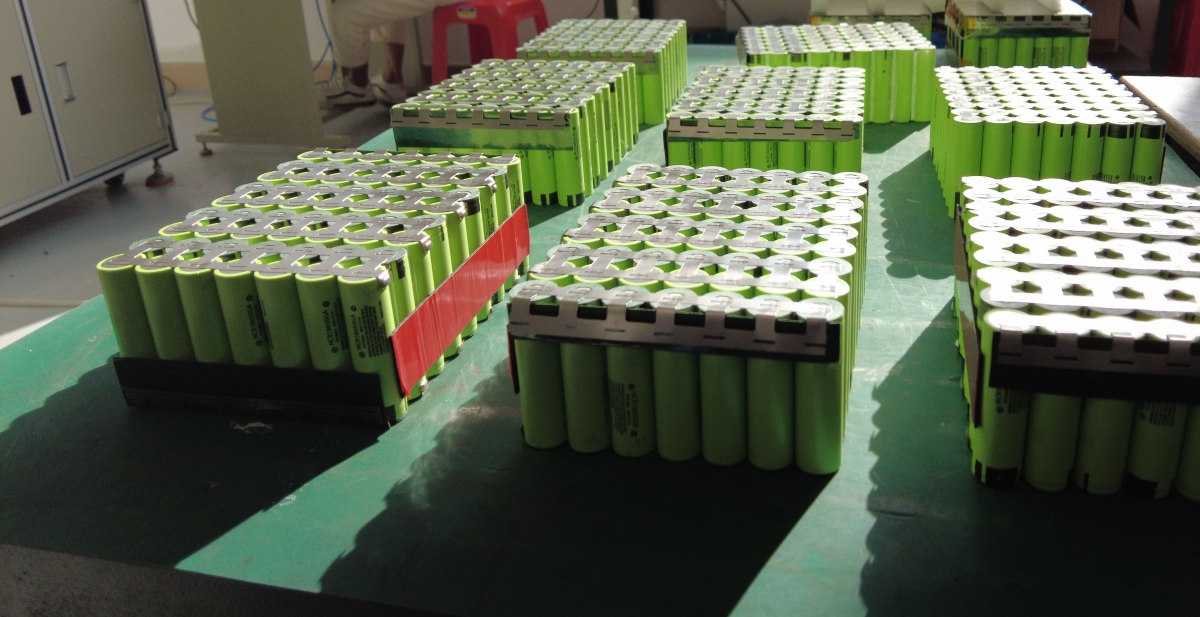- 28
- Dec
Low Temperature effects to 18650 cylindrical NMC Lithium Battery
Lithium batteries will encounter different environments during their use. In winter, the temperature in northern China is often below 0℃ or even -10℃. When the charging and discharging temperature of the battery is lowered below 0℃, the charging and discharging capacity and voltage of the lithium battery will decrease sharply. This is because the mobility of lithium ions in electrolyte, SEI and graphite particles is reduced at low temperature. Such a harsh low temperature environment will inevitably lead to the precipitation of lithium metal with high specific surface area.



Lithium precipitation with high specific surface area is one of the most critical reasons for the failure mechanism of lithium batteries, and also an important problem for battery safety. This is because it has a very large surface area, lithium metal is very active and flammable, high surface area dendrite lithium is a little wet air can be burned.
With the improvement of battery capacity, range and market share of electric vehicles, the safety requirements of electric vehicles are becoming more and more stringent. What are the changes in the performance of power batteries at low temperatures? What are the security aspects worth noting?
1.18650 cryogenic cycle experiment and battery disassembly analysis
The 18650 battery (2.2A, NCM523/ graphite system) was simulated at A low temperature of 0℃ under A certain charge-discharge mechanism. The charging and discharging mechanism is: CC-CV charging, charging rate is 1C, charging cut-off voltage is 4.2V, charging cut-off current is 0.05c, then CC discharge to 2.75V. As the battery SOH of 70%-80% is generally defined as the termination state (EOL) of a battery. Therefore, in this experiment, the battery is terminated when the SOH of the battery is 70%. The cycle curve of the battery under the above conditions is shown in Figure 1 (a). Li MAS NMR analysis was performed on the poles and diaphragms of the circulating and non-circulating batteries, and the chemical displacement results were shown in Figure 1 (b).
Figure 1. Cell cycle curve and Li MAS NMR analysis
The capacity of the cryogenic cycle increased in the first few cycles, followed by a steady decline, and the SOH dropped below 70% in less than 50 cycles. After disassembling the battery, it was found that there was a layer of silver-gray material on the surface of the anode, which was assumed to be lithium metal deposited on the surface of the circulating anode material. Li MAS NMR analysis was performed on the batteries of the two experimental comparison groups, and the results were further confirmed in Figure B.
There is a wide peak at 0ppm, indicating that lithium exists in THE SEI at this time. After the cycle, the second peak appears at 255 PPM, which may be formed by the precipitation of lithium metal on the surface of the anode material. To further confirm whether lithium dendrites really appeared, SEM morphology was observed, and the results were shown in Figure 2.
The picture
Figure 2. SEM analysis results
By comparing images A and B, it can be seen that a thick layer of material has formed in image B, but this layer has not completely covered the graphite particles. The SEM magnification was further enlarged and the needle like material was observed in Figure D, which may be lithium with high specific surface area (also known as dendrite lithium). In addition, the lithium metal deposition grows toward the diaphragm, and its thickness can be observed by comparing it with the thickness of the graphite layer.
The form of deposited lithium depends on many factors. Such as surface disorder, current density, charging status, temperature, electrolyte additives, electrolyte composition, applied voltage and so on. Among them, low temperature circulation and high current density are the most easy to form dense lithium metal with high specific surface area.
2. Thermal stability analysis of battery electrode
TGA was used to analyze uncirculated and post-circulated battery electrodes, as shown in Figure 3.
The picture
Figure 3. TGA analysis of negative and positive electrodes (A. Negative electrode B. Positive electrode)
As can be seen from the figure above, the unused electrode has three important peaks at T≈260℃, 450℃ and 725℃ respectively, indicating that violent decomposition, evaporation or sublimation reactions occur at these locations. However, the mass loss of the electrode was obvious at 33℃ and 200℃. The decomposition reaction at low temperature is caused by the decomposition of SEI membrane, of course, also related to electrolyte composition and other factors. The precipitation of lithium metal with high specific surface area leads to the formation of a large number of SEI films on the surface of lithium metal, which is also a reason for the mass loss of batteries under low temperature cycle.
SEM could not see any changes in the morphology of the cathode material after the cyclic experiment, and TGA analysis showed that there was a high quality loss when the temperature was above 400℃. This mass loss may be caused by the reduction of lithium in the cathode material. As shown in Figure 3 (b), with the aging of the battery, the content of Li in the positive electrode of NCM gradually decreases. The mass loss of SOH100% positive electrode is 4.2%, and that of SOH70% positive electrode is 5.9%. In a word, the mass loss rate of both positive and negative electrodes increases after the cryogenic cycle.
3. Electrochemical aging analysis of electrolyte
The influence of low temperature on battery electrolyte was analyzed by GC/MS. Electrolyte samples were taken from unaged and aged batteries respectively, and GC/MS analysis results were shown in Figure 4.
The picture
Figure 4.GC/MS and FD-MS test results
The electrolyte of the non-cryogenic cycle battery contains DMC, EC, PC, and FEC, PS, and SN as admixtures to improve the battery performance. The amount of DMC, EC and PC in the non-circulating cell and the circulating cell is the same, and the additive SN in the electrolyte after the circulation (which inhibits the decomposition of the positive electrode electrolytic liquid oxygen under high voltage) is reduced, so the reason is that the positive electrode is partially overcharged under low temperature cycle. BS and FEC are SEI film forming additives, which promote the formation of stable SEI films. In addition, FEC can improve the cycle stability and Coulomb efficiency of batteries. PS can enhance the thermal stability of anode SEI. As can be seen from the figure, the amount of PS does not decrease with the aging of the battery. There was a sharp decrease in the amount of FEC, and when the SOH was 70%, FEC could not even be seen. The disappearance of FEC is caused by the continuous reconstruction of SEI, and the repeated reconstruction of SEI is caused by the continuous precipitation of Li on the cathode graphite surface.
The main product of electrolyte after battery cycle is DMDOHC, whose synthesis is consistent with the formation of SEI. Therefore, a large number of DMDOHC in FIG. 4A implies the formation of large SEI areas.
4. Thermal stability analysis of non-cryogenic cycle batteries
ARC (Accelerated calorimeter) tests were carried out on the non-cryogenic cycle and cryogenic cycle batteries under quasi-adiabatic conditions and HWS mode. Arc-hws results showed that the exothermic reaction was caused by the inside of the battery, independent of the external ambient temperature. The reaction inside the battery could be divided into three stages, as shown in Table 1.
The picture
Partial heat absorption occurs during diaphragm thermalization and battery explosion, but diaphragm thermalization is negligible for the entire SHR. The initial exothermic reaction comes from the decomposition of the SEI, followed by thermal induction to induce the deembedding of lithium ions, the arrival of electrons to the graphite surface, and the reduction of electrons to re-establish the SEI membrane. The thermal stability test results are shown in Figure 5.
The picture
The picture
Figure 5. Arc-hws results (a) 0%SOC; (b) 50 per cent SOC; (c) 100 per cent SOC; The dashed lines are the initial exothermic reaction temperature, the initial thermal runaway temperature and the thermal runaway temperature
The picture
Figure 6. Arc-hws result interpretation a. Thermal runaway temperature, B.ID startup, C. Initial temperature of thermal runaway d. Initial temperature of exothermic reaction
The initial exothermic reaction (OER) of the battery without cryogenic cycle starts around 90℃ and increases linearly to 125℃, with the decrease of SOC, indicating that OER is extremely dependent on the state of lithium ion in the anode. For the battery in the discharge process, the highest SHR(self-heating rate) in the decomposition reaction is generated at about 160℃, and the SHR will decrease at high temperature, so the consumption of intercalated lithium ions is determined at the negative electrode.
As long as there are enough lithium ions in the negative electrode, it is guaranteed that the damaged SEI can be rebuilt. The thermal decomposition of the cathode material will release oxygen, which will oxidize with the electrolyte, eventually leading to the behavior of thermal runaway of the battery. Under high SOC, the cathode material is in a highly delithium state, and the structure of the cathode material is also the most unstable. What happens is that the thermal stability of the cell decreases, the amount of oxygen released increases, and the reaction between the positive electrode and the electrolyte takes over at high temperatures.
4. Energy release during gas generation
Through the analysis of the post-cycle battery, it can be seen that SHR begins to grow in a straight line around 32℃. The release of energy in the process of gas generation is mainly caused by the decomposition reaction, which is generally assumed to be the thermal decomposition of the electrolyte.
Lithium metal with high specific surface area precipitates on the surface of the anode material, which can be expressed by the following equation.
The picture
In the publicity, Cp is specific heat capacity, and △T represents the sum of self-heating temperature rise of battery caused by decomposition reaction in ARC test.
The specific heat capacities of uncirculated cells between 30 ℃ and 120℃ were tested in ARC experiments. The exothermic reaction occurs at 125℃, and the battery is in discharge state, and no other exothermic reaction interferes with it. In this experiment, CP has a linear relationship with temperature, as shown in the following equation.
The picture
The total amount of energy released in the entire reaction can be obtained by integrating the specific heat capacity, which is 3.3Kj per cell aging at low temperatures. The amount of energy released during thermal runaway cannot be calculated.
5. Acupuncture experiment
In order to confirm the influence of battery aging on battery short circuit experiment, a needle experiment was carried out. The experimental results are shown in the figure below:
The picture
As for the result of acupuncture, A is the battery surface temperature during the acupuncture process, and B is the maximum temperature that can be achieved
It can be seen from the figure that there is only a slight difference of 10-20 ℃ between the aging battery after discharge and the new battery (SOC 0%) by needling test. For the aged cell, the absolute temperature reaches T≈35℃ under adiabatic condition, which is consistent with SHR≈0.04K/min.
The unaged battery reaches the maximum temperature of 120℃ after 30 seconds when the SOC is 50%. The joule heat released is not enough to reach this temperature, and the SHR exceeds the amount of heat diffusion. When SOC is 50%, the aging battery has a certain delay effect on thermal runaway, and the temperature rises sharply to 135℃ when the needle is inserted into the battery. Above 135℃, the increase of SHR causes thermal runaway of the battery, and the surface temperature of the battery rises to 400℃.
A different phenomenon was observed when the new battery was charged with a needle prick. Some cells directly lost thermal control, while others did not lose thermal control when the surface temperature was kept below 125℃. One of the direct thermal control of the battery after the needle into the battery, the surface temperature reached 700℃, causing the aluminum foil to melt, after a few seconds, the pole was melted and separated from the battery, and then ignited the ejection of gas, and finally caused the whole shell red. The two groups of different phenomena can be assumed to be that the diaphragm melts at 135℃. When the temperature is higher than 135℃, the diaphragm melts and internal short circuit appear, generating more heat and eventually leading to thermal runaway. To verify this, the non-thermal runaway battery was disassembled and the diaphragm was AFM tested. The results showed that the initial state of membrane melting appeared on both sides of the membrane, but porous structure still appeared on the negative side, but not on the positive side.
